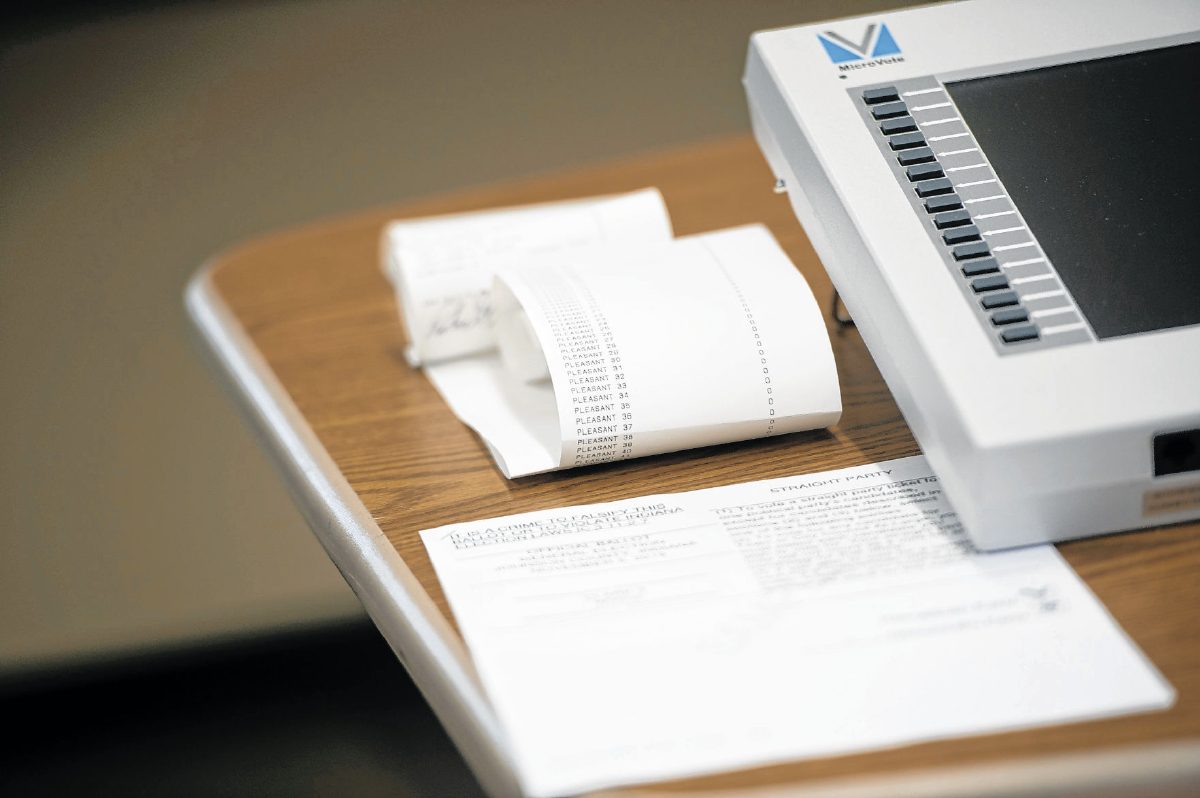The county’s voting machines are ready to use for the November election, which is expected to bring out more voters than a typical municipal election due to a Center Grove schools referendum.
The Election Board on Wednesday unanimously OK’d the machines for the fall election, which is required by state law to do before every election after 3.5 hours of testing.
Recent changes to that law requires counties to test 5 percent of the machines they will use in an upcoming election. For Johnson County, that was 13 machines, significantly more than they have tested in the past. Ball State’s Voting System Technical Oversight Program — or VSTOP — selected the 13 machines the county tested.
[sc:text-divider text-divider-title=”Story continues below gallery” ]Click here to purchase photos from this gallery
The county will use about 260 machines during early voting, which kicks off in about a month, and on Election Day Nov. 5.
As part of Wednesday’s test, Clerk Trena McLaughlin, Kevin Service, the Democratic member of the election board, and Phil Barrow, a Republican member of the election board, cast sample ballots on each machine multiple times to make sure there were no errors.
The system worked properly, McLaughlin said.
They also tested 13 of the 121 precincts that have ballots in the next election, some of which included the public question, and straight-party voting to make sure the votes cast matched what was on the tally sheet at the end.
It took each tester less than three minutes to submit each ballot, which is about how long it should take a voter to vote once they reach the booth during early voting or on Election Day.
A representative from MicroVote, the election vendor county officials hired earlier this year to manage and provide equipment for this year’s elections, helped election board members tally those votes. MicroVote replaced longtime vendor Election Systems and Software, which the county fired in February.
After tallying the votes, the representative helped election board members print totals and check it against the system for any errors. They were also shown again how to set up and tear down machines as a reminder of how to operate the machines, which are fairly new to election officials and voters.
The county is renting equipment and services this year. Voters used the new equipment for the first time during the May primary election, and it was a hit due to the speed at which voters were able to get through the lines.
The county recently decided to buy all new equipment from MicroVote ahead of the 2020 presidential election, a purchase that is expected to cost taxpayers about $1.5 million. The county’s old machines, which they bought more than a decade ago from ES and S, were outdated, and many of them no longer worked. The county had put off buying new equipment for years due to the cost.
Voting fraud and election tampering are issues of national concern, making the public tests an important step in the election process. But these tests aren’t new. It’s something that’s been done before every election for several years.
The goal of the public test is to make sure the machines work, catch any invalid entries and make sure the printouts match what was entered into each ballot on the machines. The test ballots will not be counted in the election, and MicroVote representatives cleared the system at the end of the public test. The machines that were used during the test on Wednesday are disqualified from being used during this election.
The county’s certification will be sent to the Secretary of State’s Office for further certification.
The last day to register to vote in this year’s primary election is Oct. 7. Voters will select representatives to serve in leadership roles in their cities or towns, and some — including people who do not live within a city or town — will vote on a Center Grove schools referendum.





